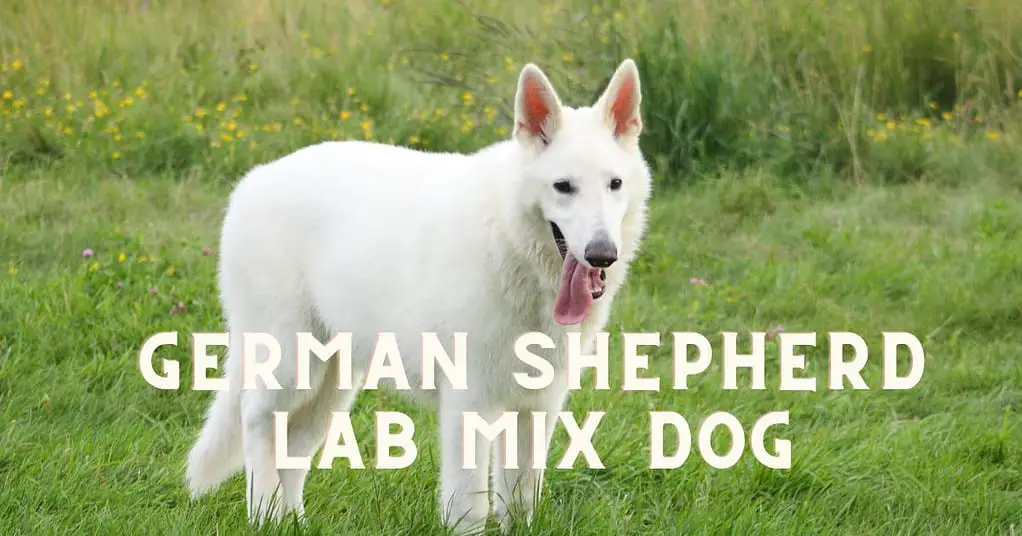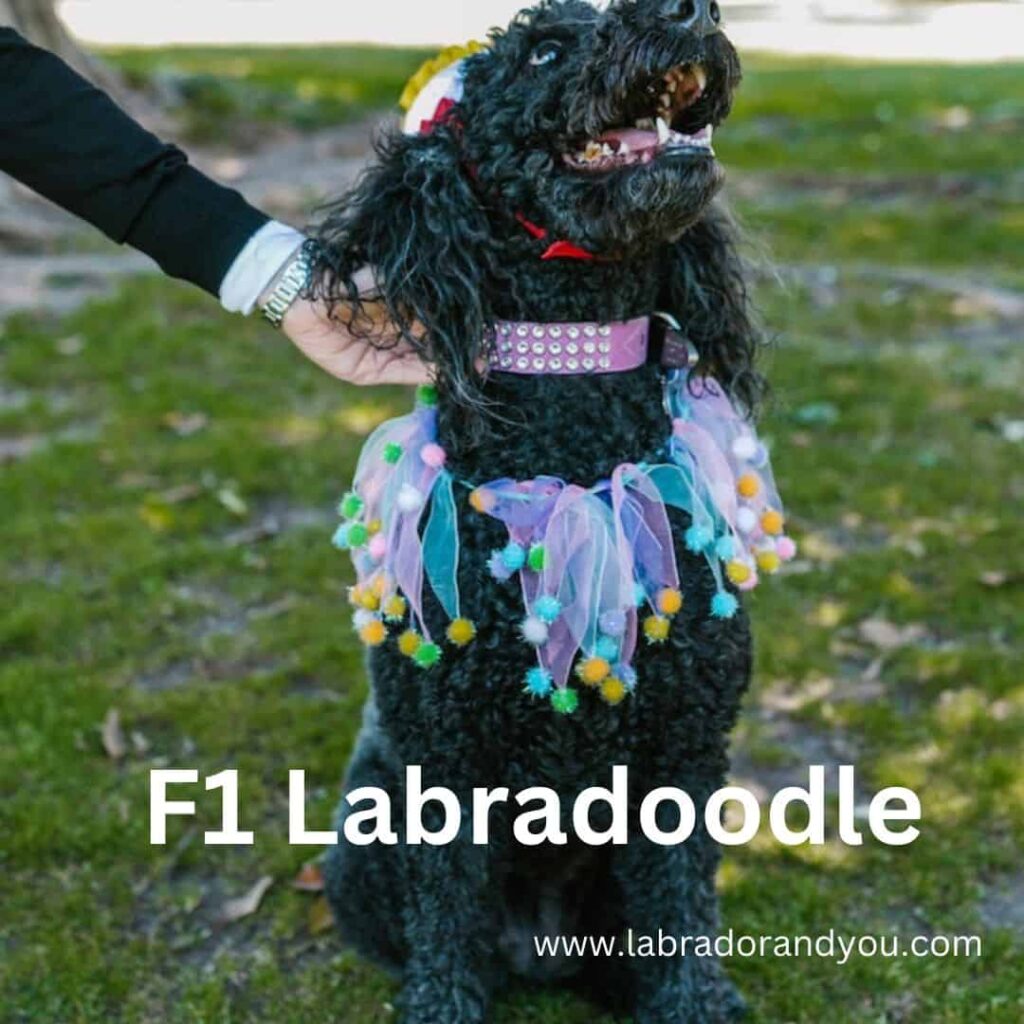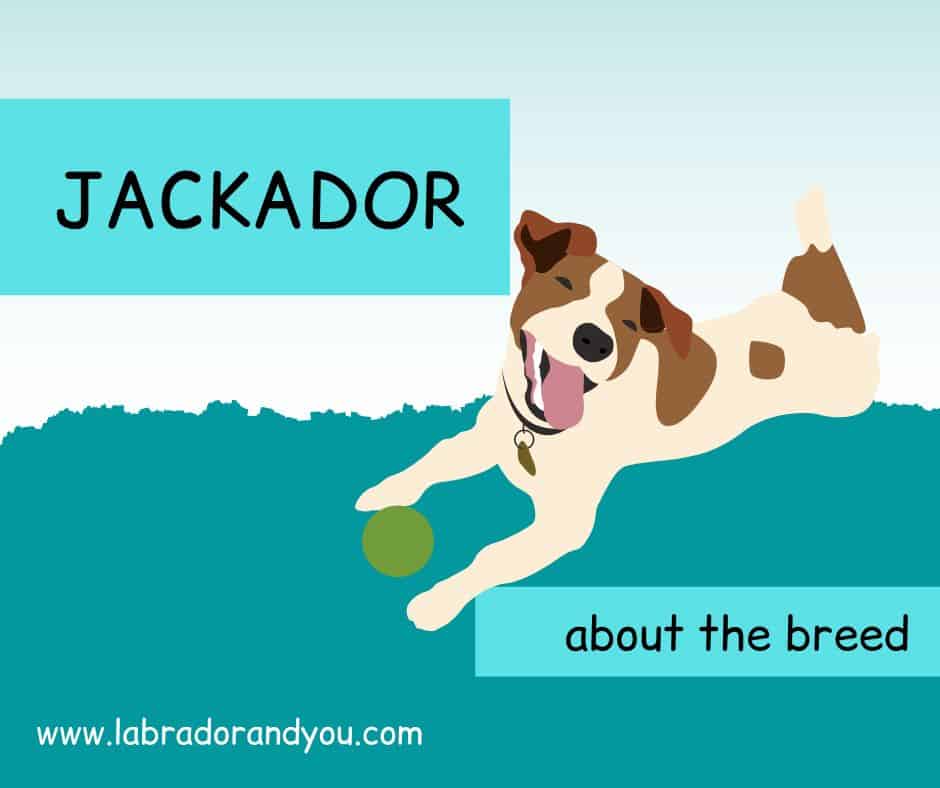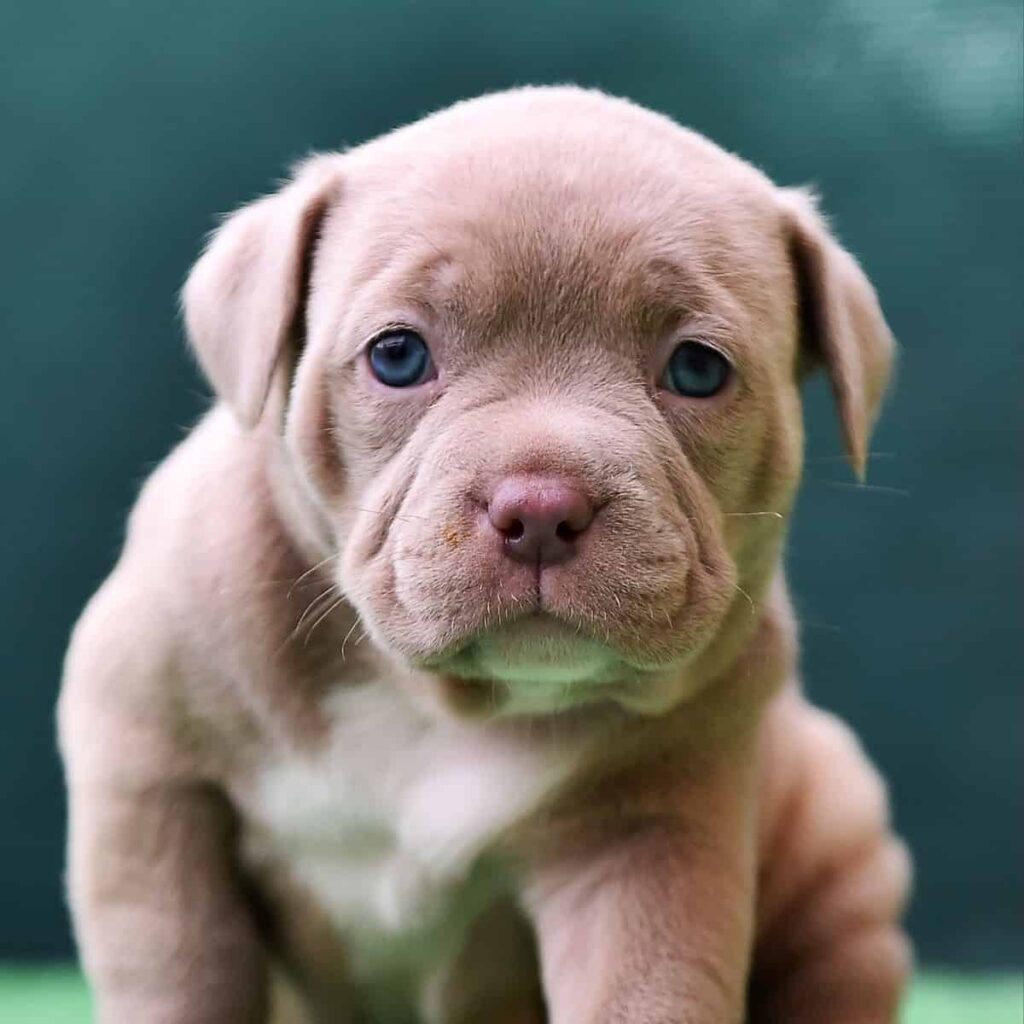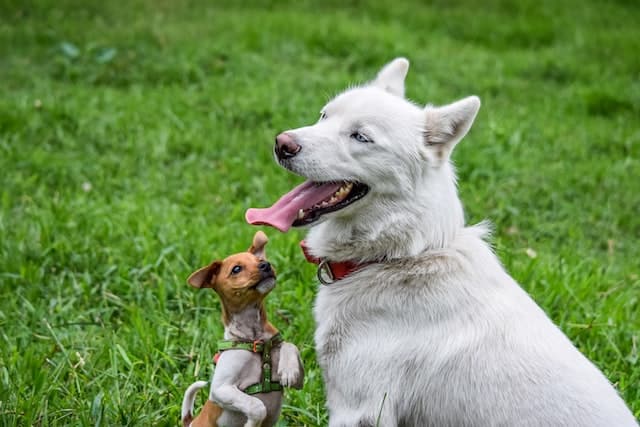Straight-Haired Labradoodles are a popular mixed breed dog which is a cross between a Labrador Retriever and a Poodle. They were originally bred to be hypoallergenic service dogs. Labradoodles can have different coats – curly, wavy, or straight. Straight-haired Labradoodles have a flat, sleek coat reminiscent of a Labrador’s.
This smooth, dense coat sheds slightly more than curly coats, so maybe less ideal for severe allergies. Straight coats still produce low dander and require minimal grooming compared to Poodle coats. They come in a variety of colors.
In this comprehensive guide, we will unpack everything you need to know, from genetics to grooming tips.

What is a Straight Hair Labradoodle?
A Straight Hair Labradoodle is a crossbreed between a Labrador Retriever and a Poodle, characterized by its straight silky or wavy coat unlike the usual curly or fleece coats common to this type of hybrid dog breed.
It inherits vital statistics from both its parent breeds, including size, weight, lifespan, and overall physical appearance.
Definition
A Straight Hair Labradoodle is a special kind of dog. It comes from the mix of a Labrador Retriever and a Poodle. This dog gets its straight coat from its Labrador parent.
Some people call this type of coat “flat” or “slick.” Unlike curly-haired Labradoodles, these dogs shed more hair but need less grooming.
They have lots of energy and belong to the gundog/utility dog group. People are still not sure if they share the same non-allergy traits as curly-haired Labradoodles do.
Vital Statistics
The vital statistics of a Straight Hair Labradoodle provides an overview of the key physical attributes of this breed.
| Attribute | Description |
| Height | Between 14 to 24 inches |
| Weight | Between 15 to 65 pounds |
| Lifespan | Typically 10 to 15 years |
| Coat | Straight and smooth, sometimes wavy, comes in a variety of colors including red and chocolate |
| Genetics | Mostly found in first-generation Labradoodles (F1’s) which is a 50% blend of Poodle and Labrador Retriever |
These statistics give a concise snapshot of what to expect when considering a Straight Hair Labradoodle.
History of the Breed
The Labradoodle breed traces its origins back to the 1950s when Wally Conron, a breeding manager at the Royal Guide Dog Association of Australia, first crossed a Labrador Retriever and a Poodle to create a hypoallergenic guide dog.
The straight-haired Labradoodles emerged later as a unique variety within this hybrid breed, displaying distinct characteristics due to varying genetic influences from their parent breeds.
Origin of Labradoodles
The birthplace of Labradoodles is Australia. Wally Conron, a man with a plan, started this breed in the late 1980s. He mixed a Labrador Retriever and a Standard Poodle on purpose. His goal was simple: create guide dogs that won’t cause allergy problems.
So, Labradoodles are not purebreds but crossbreeds born from careful planning and smart thinking. The straight hair of some Labradoodles comes from their Labrador parent.
Development of straight-haired Labradoodles
Labradoodles came from Labs and Poodles. But not all Labradoodles are the same. Some have straight hair like a Labrador Retriever. This is because they get this coat type from their Labrador parent.
So, to make straight-haired Labradoodles, breeders pair Labs with Poodles that have looser curls or wavy hair. The puppies may then have straighter coats than normal Labradoodle pups.
These dogs can show different coat colors too, like red or chocolate!
Labradoodle Breeding Genetics
Unraveling the complexities of Labradoodle breeding genetics, this section will delve into how crossbreeding practices influence the traits exhibited by straight-haired Labradoodles.
Crossbreeding for straight hair
Crossbreeding plays a big part in making straight hair Labradoodles. In simple terms, this type of dog comes from mixing a Labrador Retriever with a Poodle. This mix can give the pup different types of coats.
Some get curly hair from the Poodle parent. Others get straight or wavy fur from the Labrador Retriever side. The trick lies in genes, tiny bits of info found in every cell that control how we look and act.
So, an F1 or F2 Labradoodle might have straight hair because it gets half its genes from its Labrador parent.
Characteristics of straight-haired Labradoodles
Straight-haired Labradoodles have some special traits. Here are a few:
- They get their straight hair from their Labrador parent.
- These dogs belong to the gundog and utility dog group.
- High energy levels make them very lively.
- They have a friendly and exciting personality.
- The Poodle side gives them some curly hair genes as well.
- Straight – haired Labradoodles love to play and can be great for active families.
- Because of their Poodle genetics, some may have slight curls in their coat.
- They are often large in size like their Labrador parent breed.
- Their coat can vary in color, taking after either one or both parents.
- Labradoodle characteristics often include high intelligence and good temperaments.
Appearance
Labradoodles with straight hair, often distinct in size and weight, showcase a broad range of coat colors, offering potential owners a unique variety.
Size and weight
The size and weight of a straight-haired Labradoodle often depends on the poodle parentage. If the poodle is a standard size, the Labradoodle will typically be larger, while smaller poodles will result in smaller Labradoodles. However, smaller straight-haired Labradoodles are less common due to genetic factors.
Here’s a handy table to give you a better idea of the potential size and weight of a straight-haired Labradoodle:
| Poodle Parentage | Estimated Size (inches) | Estimated Weight (pounds) |
| Standard Poodle | 22-24 | 50-65 |
| Miniature Poodle | 14-16 | 15-25 |
Keep in mind that these are estimates. The actual size and weight of a straight-haired Labradoodle can vary based on factors such as diet, exercise, and overall health. Furthermore, Labradoodle growth charts can be used to estimate a puppy’s weight throughout their development. For example, the average size for a Miniature straight-haired Labradoodle is typically between 14 to 16 inches and 15 to 25 pounds.
Coat and color variations
Straight-haired Labradoodles come in a range of coat and color types.
- The fur on these dogs can be either straight or wave – like.
- These doodles get their straight hair from the Labrador parent.
- Some breeders call them flat coat Labradoodles.
- Their colors can vary a lot, like black, chocolate, cream, red, and apricot.
- Sometimes, their coat color changes as they grow up.
- Shedding is common with this type of coat.
- Despite the shedding, breeders find less value in straight hair Doodles due to this trait.
- Unlike curly Doodles, these dogs need less grooming help.

Intelligence and Temperament
Labradoodles, including those with straight hair, are known for their high intelligence level and gentle temperament. They excel in problem-solving tasks and adapt quickly to training sessions due to their intellectual abilities.
Their even-tempered personality makes them suitable as family pets or support animals, displaying a mix of friendliness from Labradors and the obedient nature of Poodles. Despite this charming nature, they need regular mental stimulation to prevent destructive behaviours that may arise out of boredom.
Trainability
Labradoodles learn fast. They love to make their owners happy. This makes them easy to train. Their strong skill acquisition and high aptitude help too. Many people choose Labradoodles for service or therapy work because of this.
These dogs are quick at response, comprehension, and retention during training sessions. You will find their cooperation in learning new commands or tricks pleasing.
Personality Traits
Labradoodles show many different personality traits. They are smart dogs who love to solve problems. They learn commands fast due to their high level of intelligence. These dogs are easy to train.
- Love for people: Labradoodles love being around humans and enjoy company.
- Playful nature: These dogs have a playful side and are always ready for games.
- Calm demeanor: Even though they enjoy play, Labradoodles stay calm most times.
- Happy disposition: Labradoodles are known for their happy and upbeat nature.
- Sociable behavior: They like meeting new people and pets.
- Easy training: Their smartness makes training a breeze.
Diet And Exercise
Like all active dogs, straight-haired Labradoodles require a well-balanced diet rich in protein, fats, and carbs for energy. Regular exercise is key to keep these energetic pets healthy and happy; daily walks, playtime at the park or yard are ideal activities.
Recommended diet
Labradoodles need good food to stay healthy.
- A Labradoodle’s diet must have lots of fatty acids. These are good for them.
- They should eat protein-rich foods. Turkey, beef, and chicken are great choices.
- You can change how much protein they get. It doesn’t have to be the same all the time.
- There are many ways to feed a Labradoodle. You can use store-bought dog food, make your own at home, or even give them a raw diet.
- Always think about what kind of food is best for your Labradoodle. It will help keep them strong and happy!
Exercise needs for straight-haired Labradoodles.
Straight-haired Labradoodles need a lot of exercise. Here is some important information about how to keep them healthy and happy:
- These dogs need at least 60 minutes of movement each day.
- This type of dog has a lot of energy. They need things to do so they won’t get bored.
- Finding a way for these dogs to use their energy is key. If not, they might start to act out.
- Both body and brain workouts are good for straight – haired Labradoodles.
- Try different types of play, like fetch or tug-of-war. It can make workout time fun!
- Make sure the dog gets a walk every day. This helps their health and also lets them explore.
- Mental games, like treat puzzles, are good too. It helps keep their brains sharp!
- Having a regular daily routine can help them know when it’s time to play.
Grooming
In this section, we’ll delve into critical grooming aspects for straight-haired Labradoodles. We will explore how their coat changes from puppyhood to adulthood, shedding control strategies, and the truth about their hypoallergenic factor.
Coat changes from puppy to adult
Labradoodles go through a fur change as they grow. As pups, their coat is soft and fluffy. Around the time they turn six to twelve months old, this fur starts changing. This change depends on each dog’s own pace.
The straight hair comes from their Labrador parent genes. One thing to note is that straight-coated Labradoodles keep their straight fur even when they become adults. It does not curl up over time.
Hypoallergenic Factor
Straight-haired Labradoodles are not the best for people with allergies. They have less Poodle DNA, so they are not as hypoallergenic. Their hair can hold more dander and dust. This might cause an allergic reaction in some people.
But, there is a way to make them better for those with allergies. Grooming helps get rid of these allergens from their coat. A well-groomed Labradoodle is much safer for someone with asthma or other allergies!
Shedding control
Straight-haired Labradoodles shed a lot. A good brush helps keep hair loss down. This breed is not best for people with pet allergies. Yet, shedding can differ from dog to dog. Some dogs may not lose much hair at all.
Regular grooming keeps the coat in top shape and helps control allergen levels too. So, be ready to set up a steady groom routine for your Labradoodle!

FAQs about Straight-Haired Labradoodles
This section will delve into the commonly asked questions about straight-haired Labradoodles, such as distinguishing a flat coat Labradoodle, differences between F1 and F2 Labradoodles, and factors that influence their straight hair coats.
Flat coat Labradoodle
Flat coat Labradoodles have straight fur. They shed a lot but need less brushing than curly coats. These dogs look scruffy, like the Labrador side of the family. If they don’t get the curly coat gene, then their hair is straight.
Even though they may shed more than other types of Labradoodles, good grooming can keep this in check.
F1 vs F2 Labradoodles
F1 and F2 Labradoodles are not the same. These words talk about their family tree. F1 Labradoodles come from a purebred Poodle mix and a purebred Labrador Retriever. They like to run and play more than other types of Labradoodles.
On the other hand, F2 Labradoodles have parents that are both F1 Labradoodles. Their hair can be curly, straight or something between the two! Both breeds share great traits but also have their own special things too.
Factors that influence straight hair coats
Let’s dive into what makes a Labradoodle’s hair straight. Here are the main factors:
- The coat genes: The hair texture of a Labradoodle comes from their parents’ genes. If one parent is a Labrador, then there is a chance the puppy may have straight hair.
- Inheritance from Labrador parent: Straight-haired Labradoodles often get this trait from the Labrador side of their family. This means they did not get the curly coat gene from the Poodle side.
- Coat genetics: The Cu Locus gene plays a big role in coats. Labradoodles with straight hair do not have this gene, which curls Poodle’s coats.
- Hair type: A pup’s coat can show traits from either or both parents, resulting in different types of hair.
- The role of crossbreeding: Breeders can plan for straight-haired pups by pairing certain dogs together.
Is a Straight-Haired Labradoodle right for you?
Discover the advantages and factors to consider about owning a straight-haired Labradoodle, ensuring that this breed is the perfect fit for your lifestyle. Dive in to learn more!
Pros and cons
Straight-haired Labradoodles, like any breed, come with their set of pros and cons. Recognizing these can help you decide whether this type of Labradoodle is the right fit for your household.
| Pros | Cons |
| Straight-haired Labradoodles often inherit the friendly, outgoing nature of their Labrador parent, making them great companions. | This type of Labradoodle tends to shed more due to the dominance of Labrador genes, making them less hypoallergenic. |
| They are intelligent and trainable, inherited from both parent breeds. | Their high intelligence means they might get bored easily, leading to destructive behaviors if not given enough mental stimulation. |
| Straight-haired Labradoodles typically have a more Labrador-like appearance, which some enthusiasts may prefer. | The Labrador-like coat requires regular grooming and may trigger allergies in sensitive individuals. |
| Their energy and enthusiasm make them excellent exercise partners. | They have a high-energy level, which requires a lot of playtime and daily walks or they may become restless. |
While there are plenty of benefits to owning a straight-haired Labradoodle, it’s crucial to consider the potential drawbacks. With their outgoing personalities and active lives, they could be a great addition to your family, as long as you’re prepared for the grooming and exercise needs.

Considerations before getting a straight-haired Labradoodle
Getting a straight-haired Labradoodle needs thought. Here are some things to think about:
- Grooming: This type of Labradoodle needs special grooming. You need to know the right grooming techniques for straight-haired Labradoodles.
- Shedding: Straight-haired Labradoodles can shed hair more than curly ones. This could be tough for neat freaks.
- Allergies: Some people may have allergies from dog hair. It is good to check if you or anyone in your home has allergies before getting a straight-haired Labradoodle.
- Size: These dogs can grow quite big. Make sure you have enough space at home.
- Diet and Exercise: They need healthy food and lots of exercise each day.
- Time: These dogs like company and get bored alone at home all day.
- Health Checks: Regular vet check-ups help keep these dogs healthy.
- Love and Care: Like all dogs, they need lots of love and care from you.
Conclusion
Straight-haired Labradoodles are great dogs. They need care, but they give a lot of love back. If you treat them right, they can be your best friend forever.
FAQs
1. What Is A Labradoodle Exactly?
A Labradoodle is a dog breed that is a cross between a Labrador Retriever and a Poodle. They were originally developed to be service dogs for people with allergies.
2. Why Do Some Labradoodles Have Straight Hair?
Whether a Labradoodle has curly, wavy, or straight hair is determined by their genetics from both the Labrador and Poodle parents. Straight coats are one of the possible variations.
3. Are Straight Haired Labradoodles Low Shedding?
While not quite as low shedding as curly coats, straight haired Labradoodles still shed considerably less than purebred Labs and are generally considered low shedding.
4. Do Straight Coated Labradoodles Still Have Low Dander?
Yes, they tend to produce less dander than Labs. However, they may release slightly more than curly coated Doodles, so individuals with severe allergies should take caution.
5. What Colors Do Straight Haired Labradoodles Come In?
Common colors include black, chocolate, yellow, cream, apricot, silver, cafe-au-lait, and parti colors. Pure white is not accepted in the breed standard.
6. What Is The Temperament Of Straight Coated Labradoodles?
As a smart, energetic breed developed from working stock, they need physical and mental exercise daily. With training they are very friendly, playful, sociable dogs.
7. What Kind Of Grooming Do Straight Coats Need?
They require occasional brushing and should be bathed/trimmed every 6-8 weeks. Much less intensive maintenance than Poodle coats.
8. How Big Do Straight Haired Labradoodles Get?
On average they reach 45-65 pounds (20-30 kg) and stand 21-24 inches (53-61 cm) tall. Slightly smaller than purebred Labradors.
9. Are Straight Coated Labradoodles Good For Allergy Sufferers?
While they tend to be less hypoallergenic than curly Doodles, they release far less dander than most breeds, so are still a decent option for many with allergies.
10. Where Can I Find Reputable Breeders Of Straight Haired Labradoodles?
Seek out breeders associated with dog breeding clubs that focus on Doodles. Beware of puppy mills just trying to cash in on popular mixed breeds. Verify health testing.
Author Profile

- In House Labrador Trainer
- Samta is an experienced Labrador trainer and enthusiast with over 5 years of hands-on experience, contributing invaluable insights and advice to Labradorandyou.com. Her deep understanding of Labrador temperament and intelligence underpins her effective training techniques and product recommendations. Through firsthand experience of the joys and challenges of raising Labradors, Samta's articles provide expert advice for both seasoned and new Labrador owners, covering training, care, and innovative product selection. Her commitment to enhancing the well-being of Labradors and their owners permeates her work, making it an indispensable resource for Labrador enthusiasts
Also by the author
-
 FAQNovember 16, 2023Why Is My Dog Pooping So Much? MUST KNOW Facts
FAQNovember 16, 2023Why Is My Dog Pooping So Much? MUST KNOW Facts
-
 FAQNovember 16, 2023Why Is My Dog So Skinny? 9 Reasons With Solutions
FAQNovember 16, 2023Why Is My Dog So Skinny? 9 Reasons With Solutions
-
 Mix-BreedsNovember 16, 2023Straight Haired Labradoodles Complete Guide: All You Need To Know
Mix-BreedsNovember 16, 2023Straight Haired Labradoodles Complete Guide: All You Need To Know
-
 Lab-TypesNovember 6, 2023Block Head Labs: Are They Better And Healthier?
Lab-TypesNovember 6, 2023Block Head Labs: Are They Better And Healthier?
